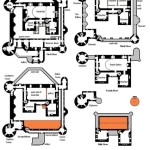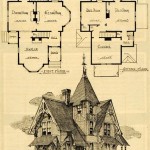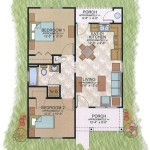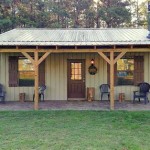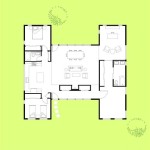Creating a house plan involves designing the layout and structure of a house, typically done by architects or designers using specialized software. It includes determining the number of rooms, their sizes, and their arrangement, as well as the placement of doors, windows, and other architectural features. For example, a couple planning to build their dream home may consult an architect to create a house plan that meets their specific needs and preferences.
Creating your own house plan can be a rewarding and cost-effective option for homeowners who want to have a direct hand in designing their future home. By using user-friendly online tools or software, individuals can create their own house plans without the need for extensive architectural knowledge or experience.
In this article, we will guide you through the essential steps involved in creating your own house plan. We will cover everything from gathering inspiration and defining your needs to selecting the right software and finalizing your design. Whether you are a first-time homebuilder or simply looking to explore your creative side, creating your own house plan can empower you to bring your dream home to life.
When creating your own house plan, it’s important to consider the following key points:
- Define your needs: Determine the number of rooms, their sizes, and their arrangement.
- Set a budget: Establish a realistic budget for your project, including materials, labor, and permits.
- Choose a style: Select an architectural style that aligns with your preferences and the surrounding neighborhood.
- Consider energy efficiency: Design your home to be energy-efficient, reducing your environmental impact and utility bills.
- Plan for storage: Include ample storage space throughout your home, such as closets, pantries, and built-in shelves.
- Maximize natural light: Utilize windows and skylights to bring natural light into your home.
- Create outdoor living spaces: Design outdoor areas such as patios, decks, or balconies to extend your living space.
- Consider accessibility: Ensure your home is accessible for all individuals, including those with disabilities.
- Hire a professional: If needed, consult with an architect or designer to ensure your plan meets building codes and is structurally sound.
- Get permits: Obtain the necessary building permits before starting construction.
By carefully considering these points, you can create a house plan that meets your specific needs and preferences, while also ensuring a functional and comfortable living space.
Define your needs: Determine the number of rooms, their sizes, and their arrangement.
Defining your needs is the foundation of creating a house plan that meets your lifestyle and requirements. Begin by considering the number of rooms you need and their intended purposes. Determine the size of each room based on its function and the number of people who will be using it. The arrangement of rooms should flow logically and provide a comfortable and efficient living space.
- Number of rooms: Consider the number of bedrooms, bathrooms, living areas, dining areas, and any other specialized rooms you may need, such as a home office or guest room.
- Size of rooms: Determine the square footage of each room based on its function and the number of people who will be using it. Consider furniture placement and traffic flow when determining room dimensions.
- Arrangement of rooms: Plan the arrangement of rooms to create a logical and efficient flow. Place frequently used rooms, such as the kitchen and living room, near each other. Consider privacy when placing bedrooms and bathrooms, and ensure that there is adequate natural light in all rooms.
- Traffic flow: Consider how people will move through the house and ensure that there is ample space for movement. Avoid creating narrow hallways or doorways that could impede traffic flow.
By carefully defining your needs and considering the number, size, and arrangement of rooms, you can create a house plan that is tailored to your specific lifestyle and requirements.
Set a budget: Establish a realistic budget for your project, including materials, labor, and permits.
Setting a realistic budget is crucial for any construction project, including creating your own house plan. A well-defined budget will help you make informed decisions throughout the planning and building process, ensuring that your project stays on track financially.
To establish a realistic budget, consider the following factors:
- Materials: Determine the cost of materials needed for your project, including lumber, roofing, windows, doors, and fixtures. Research different materials and compare prices to find the best value for your money.
- Labor: If you plan to hire contractors for any part of the construction process, factor in the cost of labor. Get quotes from multiple contractors and compare their rates.
- Permits: Obtain the necessary building permits before starting construction. The cost of permits varies depending on the size and complexity of your project.
- Contingency fund: Include a contingency fund in your budget to cover unexpected expenses that may arise during construction.
Once you have considered these factors, create a detailed budget that outlines the estimated costs for each aspect of your project. This budget will serve as a roadmap for your project and help you avoid overspending.
Remember to regularly review and adjust your budget as needed. As your plans evolve and unexpected expenses arise, make sure to update your budget accordingly to ensure that your project stays within your financial constraints.
Choose a style: Select an architectural style that aligns with your preferences and the surrounding neighborhood.
Choosing an architectural style for your home is a personal decision that should reflect your tastes and preferencias, consider the surrounding neighborhood to ensure that your house blends harmoniously with the existing architectural landscape.
- Traditional style: Traditional homes are characterized by their symmetrical facades, pitched roofs, and use of classic materials such as brick, stone, and wood. This style is often found in older neighborhoods and conveys a sense of timeless elegance.
- Modern style: Modern homes are characterized by their clean lines, geometric shapes, and use of innovative materials such as glass, steel, and concrete. This style is often associated with contemporary architecture and conveys a sense of sleekness and sophistication.
- Craftsman style: Craftsman homes are characterized by their natural materials, exposed beams, and emphasis on craftsmanship. This style is often found in the early 20th century and conveys a sense of warmth and coziness.
- Mediterranean style: Mediterranean homes are characterized by their stucco exteriors, tile roofs, and arched windows and doorways. This style is often found in warm climates and conveys a sense of relaxation and luxury.
By carefully considering your preferences and the surrounding neighborhood, you can choose an architectural style that creates a home that is both aesthetically pleasing and in harmony with its surroundings.
Consider energy efficiency: Design your home to be energy-efficient, reducing your environmental impact and utility bills.
Insulation:
Proper insulation is crucial for energy efficiency. Install insulation in your walls, roof, and floors to prevent heat loss in the winter and heat gain in the summer. Choose insulation materials with high R-values, which measure the resistance to heat flow. Higher R-values indicate better insulation.
Windows and doors:
Windows and doors are major sources of heat loss. Install energy-efficient windows and doors with double or triple glazing and low-emissivity (low-e) coatings. Low-e coatings reflect heat back into the house, reducing heat loss. Consider installing storm windows or doors for added insulation.
HVAC system:
An efficient HVAC (heating, ventilation, and air conditioning) system is essential for maintaining a comfortable indoor temperature while minimizing energy consumption. Choose an HVAC system with a high SEER (Seasonal Energy Efficiency Ratio) or HSPF (Heating Seasonal Performance Factor). Higher SEER and HSPF ratings indicate greater energy efficiency.
Appliances and lighting:
Energy-efficient appliances and lighting can significantly reduce your energy consumption. Look for appliances with the ENERGY STAR label, which indicates that they meet strict energy efficiency standards. Replace incandescent light bulbs with LED or CFL bulbs, which use less energy and last longer.
Plan for storage: Include ample storage space throughout your home, such as closets, pantries, and built-in shelves.
Closets:
Closets are an essential component of any home, providing organized storage for clothes, shoes, and other belongings. When planning your house, consider the number and size of closets you will need. Each bedroom should have a closet, and additional closets can be added to hallways, entryways, and other areas of the home.
Pantries:
Pantries are dedicated storage spaces for food and other kitchen items. They can be walk-in pantries, butler’s pantries, or smaller pantry cabinets. When planning your kitchen, consider the size and location of your pantry. A well-organized pantry can help you keep your kitchen clutter-free and make it easier to find what you need.
Built-in shelves:
Built-in shelves are a great way to add storage and style to your home. They can be used in any room, from the living room to the bathroom. Built-in shelves can be used to store books, display collectibles, or simply provide extra storage space for everyday items.
Other storage solutions:
In addition to closets, pantries, and built-in shelves, there are a variety of other storage solutions that you can incorporate into your home. These include under-bed storage, attic storage, and outdoor storage sheds. By carefully planning for storage, you can create a home that is both functional and organized.
Remember, adequate storage space can help you keep your home clutter-free and make it easier to find what you need. When planning your house, take the time to consider the storage needs of each room and incorporate a variety of storage solutions to create a home that meets your lifestyle and needs.
Maximize natural light: Utilize windows and skylights to bring natural light into your home.
Windows:
Windows are a great way to bring natural light into your home. When planning your house, consider the size, shape, and placement of your windows. Larger windows will allow more light to enter, while smaller windows can be used to create a more intimate atmosphere. The placement of your windows is also important. South-facing windows will receive the most sunlight, while north-facing windows will receive less light. Consider the orientation of your home and the surrounding environment when choosing the placement of your windows.
Skylights:
Skylights are another great way to bring natural light into your home. Skylights are installed in the roof of your home and can be either fixed or operable. Fixed skylights are less expensive to install and maintain, while operable skylights can be opened and closed to control the amount of light and ventilation in your home. Skylights can be installed in any room of your home, but they are most commonly used in kitchens, bathrooms, and living rooms.
Benefits of natural light:
Natural light has many benefits for your health and well-being. Natural light can help to improve your mood, boost your energy levels, and reduce stress. It can also help to improve your sleep quality and reduce your risk of developing certain health conditions, such as seasonal affective disorder (SAD). In addition, natural light can help to make your home feel more spacious and inviting.
Tips for maximizing natural light:
Here are a few tips for maximizing natural light in your home:
- Use large windows whenever possible.
- Place windows on the south side of your home.
- Install skylights in rooms that don’t have a lot of natural light.
- Use light-colored paint and finishes to reflect light.
- Keep your windows clean.
- Avoid placing furniture or other objects in front of windows.
By following these tips, you can create a home that is filled with natural light and all of its benefits.
Create outdoor living spaces: Design outdoor areas such as patios, decks, or balconies to extend your living space.
Outdoor living spaces can extend your living space and provide a place to relax, entertain, and enjoy the outdoors. When planning your house, consider incorporating one or more outdoor living spaces into your design. Here are a few of the benefits of creating outdoor living spaces:
- Increased living space: Outdoor living spaces can add valuable living space to your home. They can be used for a variety of purposes, such as dining, entertaining, or simply relaxing.
- Improved indoor-outdoor flow: Outdoor living spaces can help to create a seamless transition between your indoor and outdoor spaces. This can make your home feel more spacious and inviting.
- Increased property value: Outdoor living spaces can increase the value of your home. They are a desirable feature for many buyers, and they can help to make your home stand out from the competition.
- Enhanced curb appeal: Outdoor living spaces can also enhance the curb appeal of your home. They can create a more inviting and welcoming atmosphere, and they can make your home look more attractive from the street.
When designing your outdoor living space, there are a few things to keep in mind:
- Size: The size of your outdoor living space will depend on the size of your property and your budget. However, it’s important to make sure that your outdoor living space is large enough to accommodate your needs.
- Location: The location of your outdoor living space is also important. You’ll want to choose a location that is private and sheltered from the wind. You’ll also want to consider the orientation of your outdoor living space. A south-facing outdoor living space will receive more sunlight than a north-facing outdoor living space.
- Materials: The materials you use for your outdoor living space will depend on your budget and your personal preferences. However, it’s important to choose materials that are durable and weather-resistant.
- Furnishings: The furnishings you choose for your outdoor living space should be comfortable and stylish. You’ll also want to choose furnishings that are weather-resistant.
With careful planning, you can create an outdoor living space that is both beautiful and functional. Your outdoor living space will be a place where you can relax, entertain, and enjoy the outdoors for years to come.
Consider accessibility: Ensure your home is accessible for all individuals, including those with disabilities.
Accessibility is an important consideration when creating your own house plan. By ensuring that your home is accessible, you can make it more comfortable and safe for everyone, including those with disabilities. Here are some things to consider when designing an accessible home:
Doorways: Doorways should be at least 32 inches wide to accommodate wheelchairs and other mobility devices. Thresholds should be no more than 1/2 inch high, and there should be no steps at the entrances to the home.
Hallways: Hallways should be at least 36 inches wide to allow for easy movement of wheelchairs and other mobility devices. There should be no obstacles in the hallways, such as furniture or clutter.
Bathrooms: Bathrooms should be designed with accessibility in mind. The toilet should be at a height that is comfortable for people of all abilities, and there should be grab bars next to the toilet and in the shower or bathtub.
Kitchens: Kitchens should be designed with accessible features, such as lower countertops and cabinets, and pull-out shelves. There should also be clear space under the sink to accommodate a wheelchair.
In addition to these specific features, there are other general design principles that can make a home more accessible. For example, using universal design principles can create a home that is accessible to people of all ages and abilities. Universal design principles include things like using lever handles instead of knobs, and providing multiple ways to access different areas of the home.
By considering accessibility when creating your own house plan, you can create a home that is comfortable and safe for everyone.
Hire a professional: If needed, consult with an architect or designer to ensure your plan meets building codes and is structurally sound.
While creating your own house plan can be a rewarding experience, it’s important to consider the benefits of hiring a professional architect or designer. An experienced professional can provide valuable expertise and guidance throughout the design and construction process, ensuring that your plan meets all building codes and is structurally sound.
- Expertise and experience: Architects and designers have specialized knowledge and experience in designing and building homes. They can provide valuable insights and guidance, helping you avoid costly mistakes and ensuring that your plan is feasible and meets your specific needs.
- Building code compliance: Building codes are complex and vary from one jurisdiction to another. A professional architect or designer can ensure that your plan complies with all applicable building codes, reducing the risk of delays or costly changes during construction.
- Structural soundness: Ensuring that your house plan is structurally sound is crucial for the safety and longevity of your home. A professional architect or designer can perform structural calculations and analysis to ensure that your plan meets all structural requirements.
- Professional liability insurance: Architects and designers typically carry professional liability insurance, which protects you in the event of any errors or omissions in their work. This provides peace of mind and financial protection during the design and construction process.
While hiring a professional architect or designer may involve additional costs, it can ultimately save you time, money, and stress in the long run. A well-designed and structurally sound house plan is essential for a safe, comfortable, and enjoyable living space.
Get permits: Obtain the necessary building permits before starting construction.
Building permits are official approvals issued by local authorities that allow you to construct, alter, or demolish a building or structure. They ensure that your plans comply with building codes and zoning regulations, which are in place to protect the safety and well-being of the community.
The process of obtaining building permits typically involves submitting your house plan and other relevant documents to the local building department. The department will review your plans to ensure they meet all applicable codes and regulations. Once your plans are approved, you will be issued a building permit.
It’s important to note that building codes and permit requirements can vary from one jurisdiction to another. Therefore, it’s crucial to contact your local building department to determine the specific requirements and procedures for obtaining a building permit in your area.
Failure to obtain the necessary building permits before starting construction can result in significant consequences. You may be fined or ordered to stop construction, and your project may be delayed or even halted. Additionally, any work done without a permit may not be covered by insurance in the event of an accident or damage.
To avoid these risks and ensure a smooth construction process, it’s essential to obtain all necessary building permits before starting construction. By working with your local building department and following their requirements, you can ensure that your project is compliant and safe.










Related Posts

